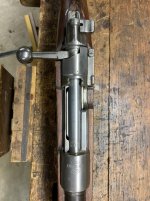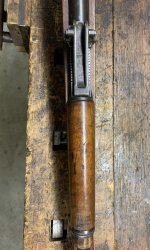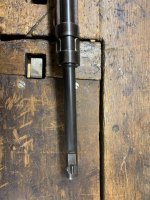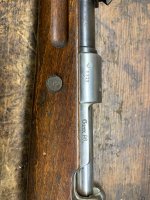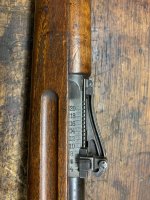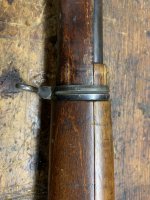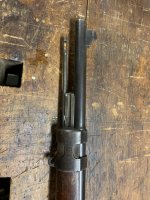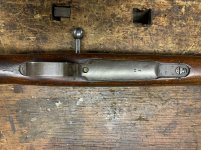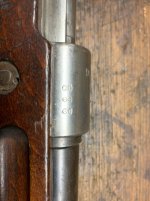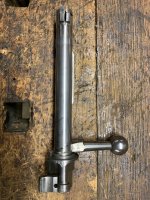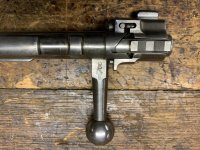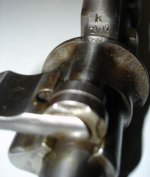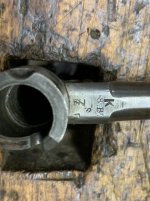CLG
Senior Member
I was asked on another thread to post pictures of my 1917 Amberg Gew. Despite its flaws, this is a favorite of mine. Though the bolt and rod are mismatched ( the bolt is correct however, and the rest of the rifle is completely matching) the overall crispness of the rifle, the dry appearance of the wood, something one looks for in early furniture as an original surface, not to mention I love the figured walnut hand guard on a beech stock. Considering the fact that it a fairly late rifle, the quality that Amberg maintained is amazing.
Attachments
-
 A10BBA2B-7A6B-4556-93E3-B27EE0C4B468.jpg301.3 KB · Views: 72
A10BBA2B-7A6B-4556-93E3-B27EE0C4B468.jpg301.3 KB · Views: 72 -
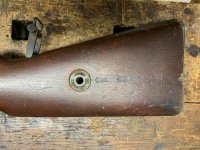 B3267722-6219-44BA-803D-B7D59623B0D7.jpg313.8 KB · Views: 65
B3267722-6219-44BA-803D-B7D59623B0D7.jpg313.8 KB · Views: 65 -
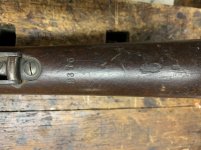 D505C3E6-C355-4639-A1EB-69BBAFB1C8BE.jpg288.6 KB · Views: 55
D505C3E6-C355-4639-A1EB-69BBAFB1C8BE.jpg288.6 KB · Views: 55 -
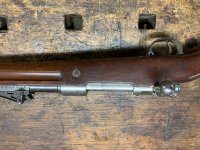 FA50404D-3D2D-4DF7-A023-C5B679F00FC7.jpg318.9 KB · Views: 60
FA50404D-3D2D-4DF7-A023-C5B679F00FC7.jpg318.9 KB · Views: 60 -
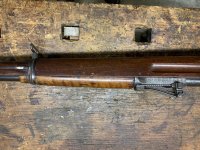 C6EC26AA-C0D1-4ECC-A1CE-8F000AF979C0.jpg322.7 KB · Views: 51
C6EC26AA-C0D1-4ECC-A1CE-8F000AF979C0.jpg322.7 KB · Views: 51 -
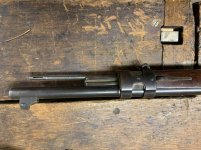 E6700C62-9095-4C6E-B4C6-B3058CC7948D.jpg314.8 KB · Views: 51
E6700C62-9095-4C6E-B4C6-B3058CC7948D.jpg314.8 KB · Views: 51



